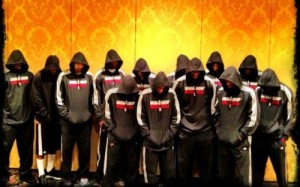Trayvon Martin’s death has drawn a great deal of attention from people throughout the United States. Our own Sociological Images has written about the tragedy in three distinct posts (all found here).
This event occurred while my introduction to sociology courses were discussing race. My students, logically, brought up his murder when we were discussing racial formation and racial stereotypes. This turned into the most engaged, energetic and lively discussion we had all semester.
Students were, as they should be, angered. They were frustrated with a society that allowed such tragedies to happen and disappointed that more people were not demanding Zimmerman be prosecuted. I’m willing to go on a limb, however, and suggest not all students will feel the same way.
Despite my students’ passion, they brought up a variety of questions I believe their peers (and broader society) will have:
1) If Zimmerman is latino, is the case still about race?
Absolutely. This question led our class to have a great conversation about the internalization of racial stereotypes and the impact of institutional and interpersonal racism on individuals. We watched “A Girl Like Me” and discussed Kenneth Clark‘s original doll experiment. (A group of my students are even setting out to do the same activity with children who are not black.)
2) Why would Zimmerman suspect Trayvon of suspicious behavior at all?
This question led to a great conversation about the impact of stereotypes on the perceptions we have of one another. Using labeling theory, our class was able to discuss the way in which society ascribes particular labels to people based on the variety of statuses we embody. These labels affect the way that people perceive us and the ways in which they interpret our behavior (such as the wearing of a hoodie). In order to lead a discussion on labeling by race and gender, we watched the following clips from my favorite teaching show, “What Would You Do“: the bike theft, and racism in America (parts one and two). Students immediately connected the material to the Trayvon case and their own lives (I had them do an in class writing on how they have been effected by labeling).
3) Why isn’t Zimmerman being charged?
Students, particularly those from states that do not have “Stand Your Ground” laws, are particularly puzzled by the fact that Zimmerman was not arrested. Teachers who wish to discuss this topic can explore the history of these laws here. My students, generally, were appalled by the interpretation of these laws (as addressed in that article) and their expansion. Many expressed personal fear, and others remarked that, had Zimmerman been black, he would have been arrested immediately.
I encourage you to have conversations about Trayvon Martin in your classroom – not to exploit his death but to make students aware of the prevalence of such cases. Hopefully, our students will one day be in positions in which they make and enforce laws and policies that will treat all people equally.




 This article and short film would would fit well in many types of courses: on the family, marriage, sexuality, poverty, or drug use.
This article and short film would would fit well in many types of courses: on the family, marriage, sexuality, poverty, or drug use.
